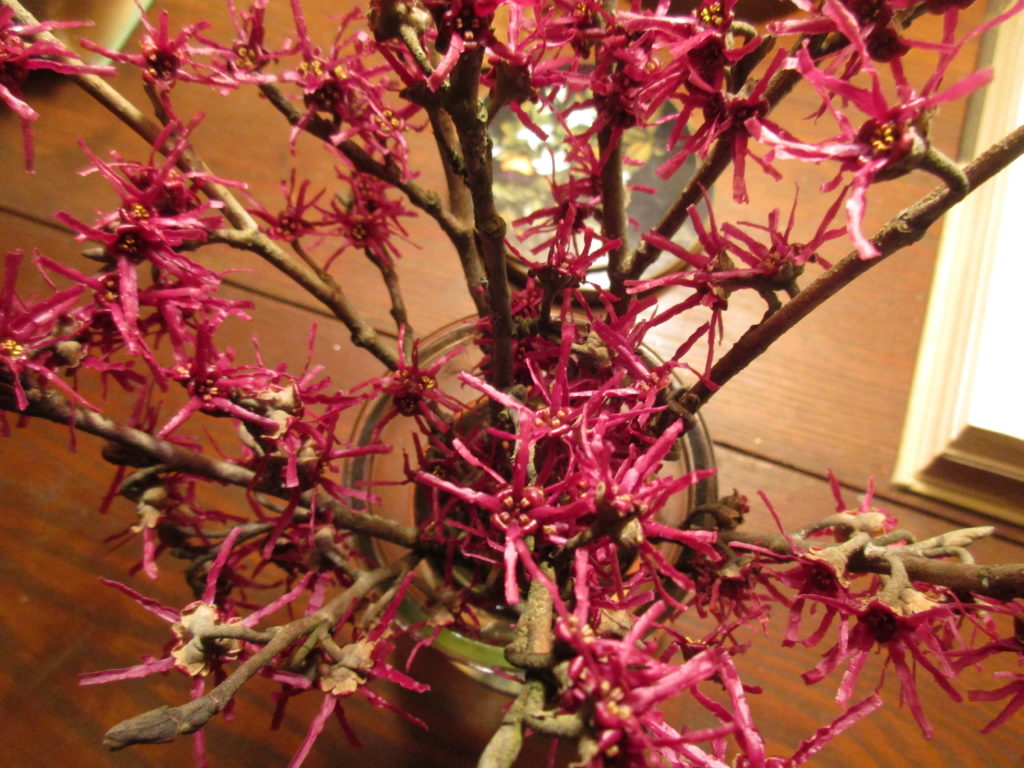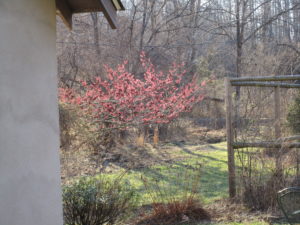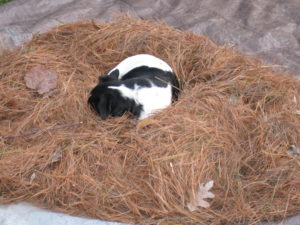February is the month of ‘Diane’ in the hollow. A ruby-red cultivar of hybrid Asian witchhazels (Hamamellis x intermedia), I celebrate her each year at this time, the time of Eros, the time of love.
Her twigs force like a starburst for indoor bouquets and she glows in the sunset. No fragrance here (although Dirr discerns a “light” scent), and big brown leaves cling to the younger branches. Older trunks, covered with silvery lichen, are windblown and display the flowers to perfection.
Underplanted with Asian beautyberry (Callicarpa dichotoma), ‘Diane’ makes a lovely picture outside the window behind my computer screen. When the blinds are up I watch the birds flit up and down between them. During December’s two snows, sparrows fed on the dried amethyst berries which persist through winter and something’s always pecking away at the lichens or witch hazel buds.
Some native plant lovers devalue the Asian species, not only because of invasive tendencies, but because they don’t provide larval food for spring caterpillars that nesting birds feed on. But shelter, berries in fall and winter, and summer nectar are also important to birds and pollinators and I confess to being glad our old autumn olives feed migrating robins and offer respite in its tangled branches from freezing rain in winter.
I believe along with Tao Orion and other permaculturists that there is a place for novel landscapes in the 21st century and that we must not accept an ethic of destruction, often based on herbicides, in the name of saving an idealized landscape.
This winter saw the passing of our beloved Milo who did not quite make it to his 17th birthday, nor live to see another spring. His heart was so big and he taught us so much.




